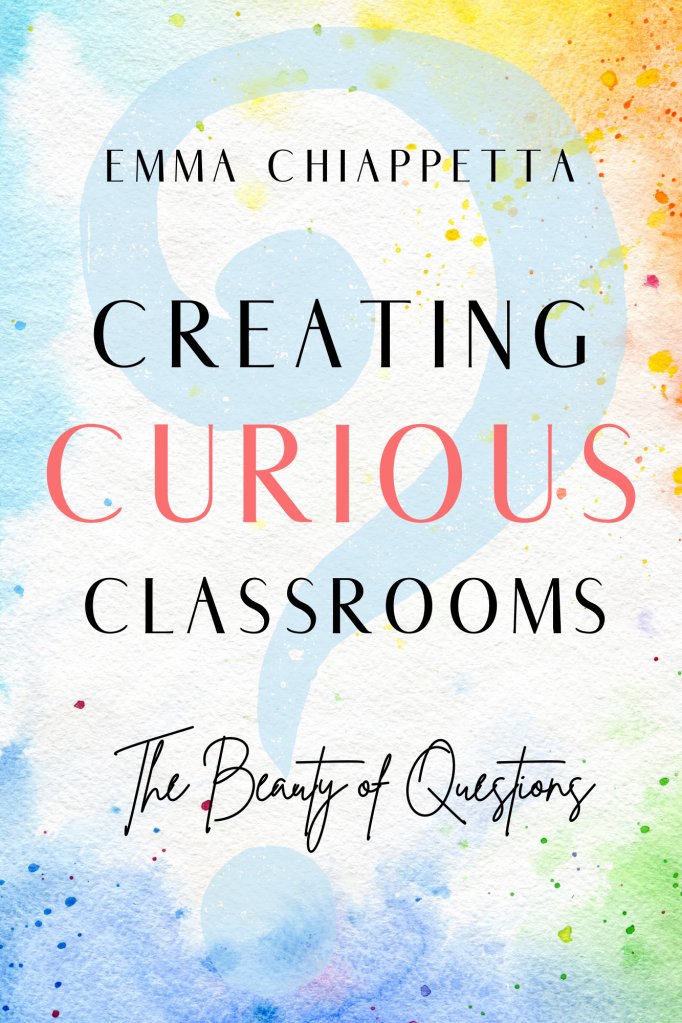Guiding Students to Ask Great Questions
By building relationships and centering student participation, teachers can create a community where curiosity and inquiry are valued.
Your content has been saved!
Go to My Saved Content.A seed cannot grow if there are no nutrients in the soil. Analogously, students can only begin to be curious if the conditions are right. On the first day of school, I was excited to begin the year with questions and curiosity. I showed my senior statistics students an image that displayed a subset of integers from the Mayan number system.
I asked, “What does this make you wonder?”
Not a single question emerged from the room. Immediately students began trying to “solve the problem.” They searched for patterns and some quickly exclaimed,“I get it! I figured it out.” I gently reminded them that the goal wasn’t a solution. The goal was questions.
For me, this activity cemented the idea that our education system doesn’t teach students to value questions and curiosity. We teach them to strive for answers, in particular, correct answers. While there is absolutely nothing wrong with seeking a solution to a problem, we can’t make any progress or have new ideas without asking the right questions.

You might say that my students had learned to squelch their curiosity over time. I needed to help them realize that asking questions is an active process that they could get better at. They could re-learn to wonder. It’s also possible that my students didn’t know how to ask a question.
Sara Lev works with four- and five-year olds and says that, despite the fact that young students are naturally curious, they are often more likely to make statements than ask questions when prompted to wonder. For example, after playing a podcast, Lev asked her class, “What questions do you have about making a podcast about outer space?” One student stated,“It should be about the sun!” Sara took the spirit of his statement and helped him turn it into a question, “Oh, are you wondering what the podcast should be about?” and that becomes the question,“What topics should we talk about?”
Even in upper grades, students tend to articulate thoughts and opinions more easily than questions. To get students asking, we can help them reframe those ideas as curiosities and things they should wonder more deeply about.
If you are asking, “Why aren’t my students asking questions?” it could be that their curiosity was squelched, they are scared, or that they just don’t know how. In what follows, we’ll explore several ways to kick start the process and plant the seed of wonder.
How Do I Create a Safe Environment for Wondering?
My dad was not the typical “star student.” He was one of seven and school was not the family’s top priority. The lessons he remembers from school came from Sister Loretta: “Don’t waste any food” and “Be respectful and don’t talk out of turn.” At the same time, my dad is and always has been a deeply curious person. He spends his free time tinkering, taking apart old radios, record players, and vintage dirt bikes. He tweaks them and puts them back together, better than before. He once showed me a model he drew in high school of an electric go-kart, long before Elon Musk or anyone else had talked about such a thing. I asked him about his experience in school and whether he asked questions. “Never! I was scared. I was scared of the teacher, but also of what my classmates would think of me.”
Imagine a classroom environment where my dad would have been comfortable voicing his curiosity, where his questions were celebrated, and most importantly, where other students admired him for his creativity. Perhaps he would have spoken up more, asked how generators work or had an opportunity to do a project to learn more about batteries. Maybe he would have even built the electric go-kart he dreamed up in his sketchbook.
Traditionally, school has been a place where teachers test their students with questions and students prove their worth with answers. “Knowing things” is valued and “not knowing” is penalized by low grades and loss of privileges. What student would want to ask a question in this environment? Their question would indicate a lack of knowledge and diminish their worth in a system that rewards answers.
Our first step towards creating a space in which students are willing to ask questions is to build trust in our classroom communities. This is a prerequisite for students to feel safe enough to take the risk of admitting that there is something they do not know.
Small changes in language can go a long way toward shifting the culture around questions. André Sasser noticed this in her first few years of teaching. When she began, after a lesson she would ask, “Are there any questions?” Students rarely voiced any. She adjusted her language to, “What questions do you have?” or “Ask me three questions.” With these prompts, students began to stir.
This simple tweak made queries the expectation; students rose to that expectation and their questions flowed. They were fearless and asked questions that may have come off as too basic or obvious in a room that didn’t value such risk-taking. Simply using careful language to normalize and solicit questions can begin to change the culture.
My dad was primarily afraid of how other students might perceive him if he asked a question. Normalizing the act of asking, like Sasser has, sends a message to all students in the class that questions are to be valued, not mocked. In the next few sections, we’ll discuss more strategies for helping all students in the class to see the value in questioning rather than seeing it as a weakness.
Helping your students get to know each other can also have an impact on building trust in your classroom community. You likely have noticed this in your own experiences. Some groups of students know each other well and have been in classes together for years. They are comfortable with each other and are willing to open themselves to the vulnerability associated with asking a question. Other groups of students, who have not built relationships with each other, will be quieter and less likely to admit when they don’t know.
Imagine a new student entering your class for the first time. This likely changes the dynamic for everyone. The new student often feels like they need to make a good impression and accordingly will answer questions they know the answer to but be less likely to take a risk by asking a question. Students who have been in your class may also be more cautious when it comes to speaking out in class, wanting to make a good impression on the newcomer. Over time, as relationships grow, lively inquiries and class discussions return.
Fortunately, teachers can actively help students build relationships with each other. One strategy is to provide students the opportunity to work collaboratively toward a common goal. Review games and team activities give students time to socialize with each other with enough structure to bypass the awkwardness of being in middle school. Healthy competition motivates students to engage with each other. Further, these activities reduce stress levels which helps the students feel more open to each other.
Another key strategy for helping students become comfortable with one another is to reduce your impact in the classroom. It’s all about giving students ownership of the content by honoring their thoughts and giving them time at the board to teach each other.
One powerful play is to invite students to present their work at the board every day, while you take a backseat, sitting off to the side somewhere. This physical action, ensuring that the presenting student is the only one standing, demonstrates that the student is in control of the room (Rowe, 2022, personal communication). By giving students the opportunity to control the room, they feel special and valued.
Excerpted from Creating Curious Classrooms: The Beauty of Questions by Emma Chiappetta. Published by ConnectEDD Publishing.
